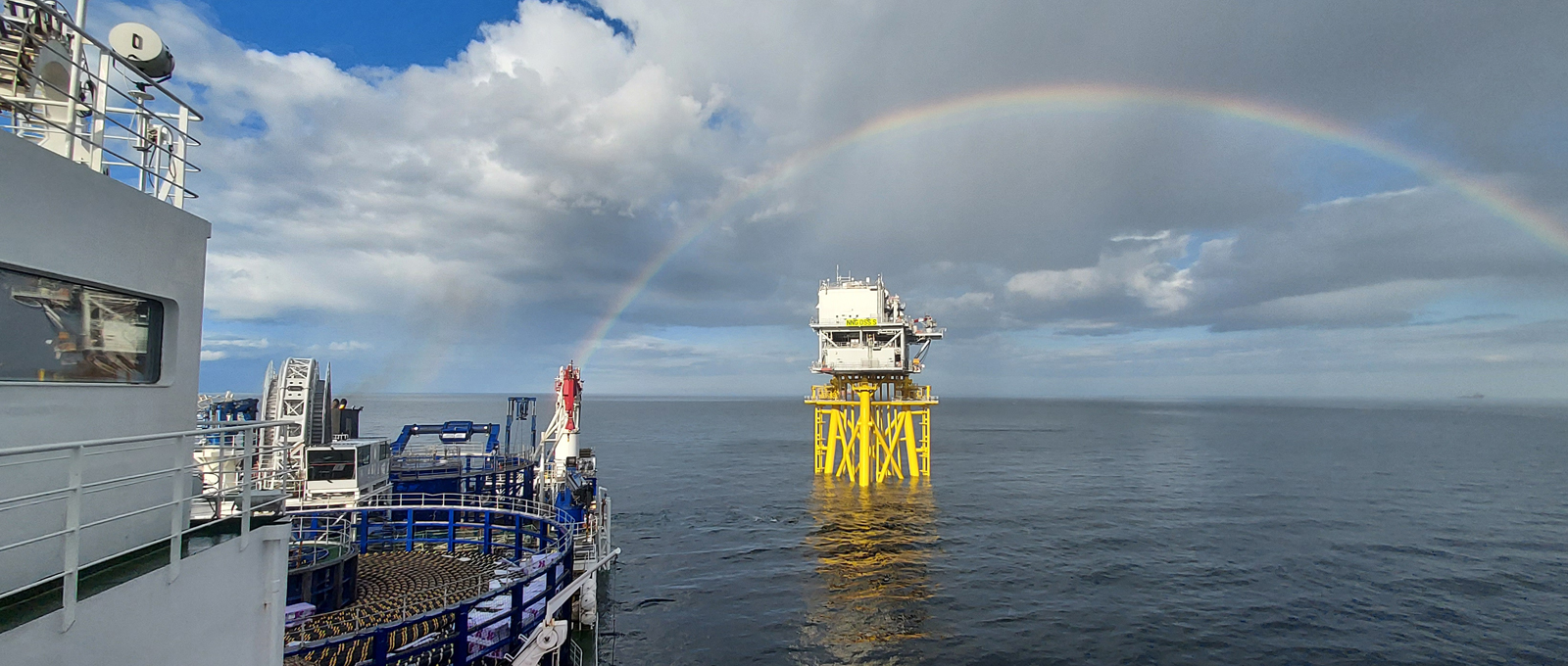Prysmian designed, supplied and installed two HVAC 220 kV three-core extruded export submarine cables with single-wire armoring which reach land at Thorntonloch beach in East Lothian. The company also provided two 220 kV extruded land cables circuits that link the landfall area to the substation at Crystal Rig and two 400 kV extruded land cables circuits to link the Crystal Rig substation to a Scottish Power substation. The submarine cables were manufactured at Prysmian’s center of excellence in Pikkala (Finland), while the land cables were produced in Gron (France).
Prysmian successfully completes cable installation for Neart na Gaoithe offshore wind farm in UK

Prysmian has successfully concluded the installation of submarine and land power cables to connect the Neart na Gaoithe offshore wind farm to the Scottish mainland power grid.
The offshore wind farm, located 15.5 km off the Fife coast in the east of Scotland, will produce up to 450 MW of green and renewable energy to supply clean and cost-competitive power to around 375,000 Scottish homes, helping towards Scotland’s targets to reduce its CO2 emissions.
“The completion of the Neart na Gaoithe cable installation project marked a significant achievement for Prysmian, due to the complexity of the scope and the relevance of our customer. We are proud to have delivered the project matching the required quality but most of all reaching the heaviest possible health and safety results, with 0 LTI (lost time injury) registered in over 600,000 worked manhours. This also thank to a deep-routed safety culture and attitude of the personnel that worked on the project, strengthened by the provision of over 2,000 hrs of safety training arranged.”

Massimo Galletta
Project Director
The project is now in the testing and commissioning phase and the system is scheduled to go live during 2024. Prysmian can be proud to underline that it timely completed its scope with the satisfaction of the customer and all the involved Parties.
“Prysmian managed complex scopes such as the sea-land cable landing, the laying and burial of the cables, the pulling of the cables onto the offshore platform and the termination of the cables all within its scope. This required major effort spent on interfacing with other packages working on the project”,
said Lubna Gemey, Project Manager for the offshore activities.
“It was a 360-degree project from the offshore perspective,” she said. The marine cable laying work was performed by Prysmian’s Cable Enterprise vessel, while the burial campaign was handled by the Normand Pacific. The Cable Enterprise also managed the pulling of the cables onto the platform.
Among the challenges Prysmian encountered during the project was the need to coordinate with the many other companies involved, particularly on the offshore platform. The wind turbines for this project are produced by Siemens Gamesa, the offshore foundations are by Saipem, and the substations are supplied by General Electric (GE). “It was interesting to interface with other big contractors such as Saipem and GE. They are as big as us in the market and we had many discussions together to coordinate all the activities. On the offshore platforms, we were working in a confined space with the other contractors, making sure that things were going smoothly, also considering the simultaneous operations that were being performed. This required strong planning to collaborate efficiently and meet time requirements, a good attitude, and close cooperation” said Lubna.
“Another technical challenge faced by Prysmian during the project was related to the sea-land horizontal directional drilling (HDD), a 600 meter pipe installed on the sea-land transition area that allowed the cable to pass from offshore to the land. Prysmian employed a new method for installing the pipe, which was pushed from the shore instead of being pulled from offshore, in order to limit the engagement of the offshore spread always subjected to weather constraints. It was challenging, but with the proper arrangements and the right people, it worked” - said Massimo.
In conclusion, among the various challenges encountered by the project of its execution phase, it is worth to mention also that main construction works occurred during the Covid pandemic. This required additional effort and measures took on both the land site and the vessel. Also in this case, Prysmian succeeded in ensuring personnel safety while maintaining a steady progress as planned.




